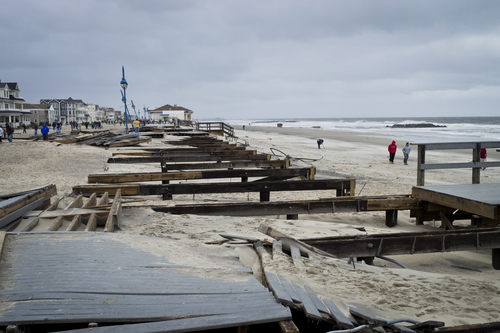While arguments from climate change deniers have subsided, there is still discussion about the cause of climate change—natural or man made? But these arguments are mere time-wasters. Right now it’s critical to put the focus on managing this risk.
Insurers have it right. For years they have been pointing to the urgent need to deal with the issues surrounding climate change. Insurers know this global risk needs to be dealt with now—and in the future—and they can’t afford to get it wrong.
Johnny Chan, Ph.D., director of the Guy Carpenter Asia-Pacific Climate Impact Center said it best: “The debate on climate change and global warming has been intensely polarized. A great deal of this ‘noise’ has clouded the very real and emerging issues that we as an industry and society need to address. In order to adapt to climate change and the changing risk landscape, it is necessary to cut through this noise and focus on objective decisions to mitigate both the financial and social risks associated with climate change.”
Guy Carpenter said in a study on the risks of global warming that the biggest threat is rising sea-levels. According to the report, the greatest concern is coastal flooding, projected to increase as sea levels rise at least one to two feet by the end of the century. In other words, storms such as Superstorm Sandy on the U.S. East Coast and Cyclone Nilam in Eastern India are expected with greater frequency and severity.
Post-Sandy, we’ve seen how far-reaching the effects of a mega-storm can be. In fact, 25 miles or so away from the New York/New Jersey shoreline, northward along the Hudson River where I live, homes, businesses and communities were devastated by the storm surge. A number of businesses have closed and damaged homes still stand boarded and empty.
Bloomberg Businessweek reported that as the Federal Emergency Management Agency moves forward with its plans to update flood maps nationally, 350 coastal counties—and 32,000 homes—will be impacted. Homeowners and business owners are reeling from the price of flood insurance, which will escalate even more in designated areas unless they raise structures. One couple in Old Greenwich, Conn., will pay $300,000 to raise their home 15.5 feet, according to the article. Residents of towns that elect not to adopt the maps will not be eligible for National Flood Insurance Program coverage.
Hard-hit New York and New Jersey are taking the threat of rising seas seriously with announcements that a number of coastal structures will need to be raised. New York City Mayor Michael Bloomberg in June declared a sweeping plan to help combat future flooding. The plan, which would include building flood walls, levees and bulkheads along 520 miles of coast, was projected to initially cost $20 billion.
Guy Carpenter’s report recommends that coastal areas re-examine their flood strategies including dykes and seawalls. Inland urban communities aren’t immune, as winds and heavy rains can cause flooding. These areas need to have storm water management infrastructure in place to accommodate larger volumes of rainwater and should upgrade codes and standards for infrastructure and land use that permits rainwater catchment basins.
While these preparations should be a priority for governments, they also compete with the need to replace aging infrastructures everywhere. Bridges, roads and water systems need repairs or replacement in every corner of the country. But many communities, crippled by debt and shrinking workforces, no doubt are focusing on needs as they arise. Hopefully the two can go hand-in-hand so that risk managers can build in flood control and other upgrades as they make the improvements so badly needed.




